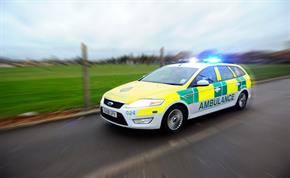999 response pilot announced

On Friday the Secretary of State for Health, Jeremy Hunt, announced a pilot at two ambulance trusts to possibly change the way services respond to 999 calls, starting in February.
Call handlers at South Western Ambulance Service and London Ambulance Service will be given more time to assess a call, up to an additional 120 seconds, to the maximum ‘clock start’ for all 999 calls except Red 1. NHS England believes this will determine the best response to send, reduce operational inefficiencies and improve patient outcomes.
During the pilot, a small number of potentially life-threatening codes will also be moved from Red 2 to Red 1 to ensure clinical safety and an even more rapid response to these conditions.
In a letter to Rt. Hon Jeremy Hunt MP, Professor Keith Willett, Director of Acute Care at NHS England, said: “The current time-based ambulance response standards have been effective in driving improvements, and maintaining response times to the most critically ill and injured patients. However, efforts to comply with these standards in the face of steadily rising demand over time have led to a range of operational behaviours that appear increasingly inefficient, and which have the potential to create a system with unnecessarily high and unevenly distributed clinical risk. Widely recognised examples of this problem include:
• Dispatching resources to a 999 call, on blue lights and sirens, before it has been determined what the problem is, and whether an ambulance is actually required.
• Dispatching multiple ambulance vehicles to the same patient, on blue lights and sirens, and then standing down the vehicles least likely to arrive first.
• Diverting ambulance vehicles from one call to another repeatedly, so that ambulance clinicians are chasing time standards rather than focussing on patients care needs.
• Using a “fast response unit” (car, motorbike, etc.) to “stop the clock”, when this unit may provide little clinical value to the patient (e.g. stroke victim), who then has to wait a long time for a conveying ambulance to arrive.
• Very long waits for lower priority (“green”) calls that nevertheless need assessment and conveyance to hospital, and some of which have time dependent problems.”
Data from the pilot will be published alongside normal national ambulance targets. In his letter Professor Willett added that a full evaluation of the results would take place and “if conclusively proven, Ministers would want to implement this change throughout England.”
Professor Willett’s letter also sets out details of a proposed change to the A19 definition:
"We considered a revision to the definition of the A19 standard to a “conveyance response”. The current technical definition of the A19 standard states that the vehicle arriving within 19 minutes should “be capable” of transporting the patient. This has been interpreted, in some instances, such that an ambulance fast response car can “stop the clock” because, in theory, it could transport the patient. However in reality the patient has to wait for an ambulance."
Fraer Stevenson, UNISON Branch Secretary, has been campaigning for a change to the way A19 can be met since 2013, to ensure ambulance trusts do not 'hit the target and miss the point’.
Fraer said: "Although the timescales continue to be frustrating, and whilst I support the direction of the pilots, it’s encouraging to see the A19 definition mentioned by Professor Willett, with a commitment this will be considered further. Throughout 2014 there has been a lot of behind the scenes campaigning, supported by Anthony Marsh, and east of England MPs; we will continue to campaign over this issue nationally until the definition is changed."
For more information on this campaign, visit http://www.changeA19.org.
You can read Professor Willett’s full letter on the Parliament website. Updates will be published in Need to Know as the pilot progresses.
Published 22nd January 2015
